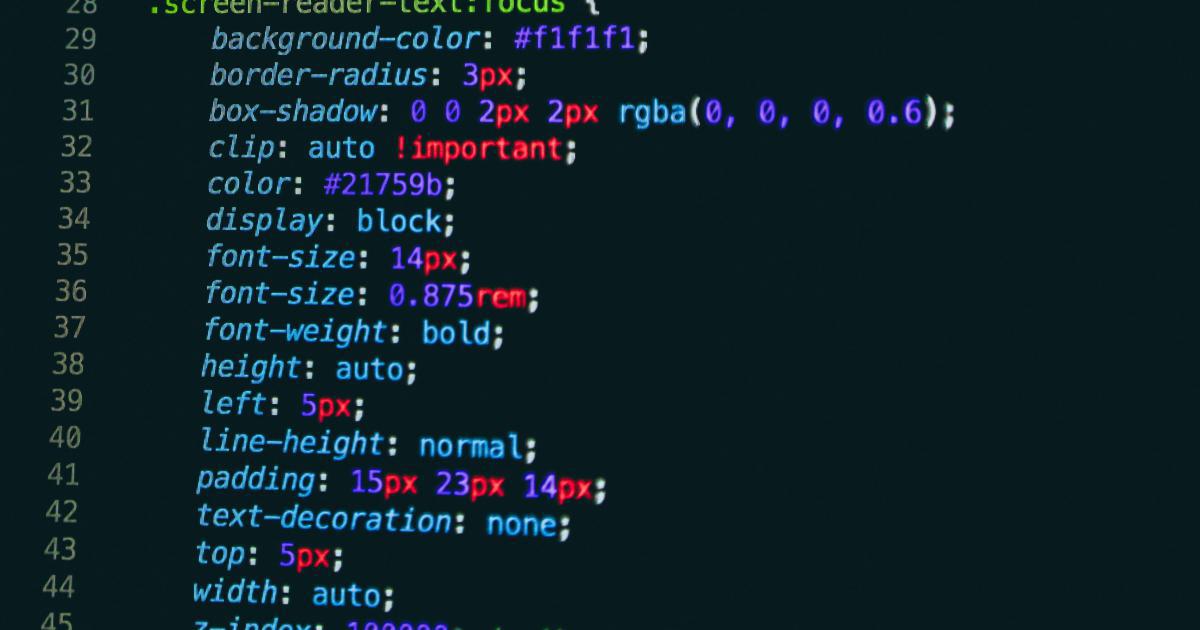How to Enhance A/B Testing with Robust Goal Tracking in Analytics


Unleashing the Power of A/B Testing and Goal Tracking
In the ever-evolving digital landscape, where user behavior and preferences can change in the blink of an eye, organizations are constantly seeking ways to optimize their online presence and deliver exceptional experiences. A/B testing and robust goal tracking in analytics have emerged as powerful tools to navigate this dynamic environment and drive informed decision-making.
A/B testing, a fundamental component of data-driven marketing, allows organizations to compare the performance of two or more variations of a web page, app feature, or marketing campaign. By analyzing the results, businesses can identify the most effective approaches and make data-backed decisions to enhance their overall strategy.
However, the true value of A/B testing lies in its ability to align with and track specific business goals. By integrating robust goal tracking into the analytics framework, organizations can gain a deeper understanding of how their experiments are contributing to the desired outcomes, enabling them to refine their tactics and maximize the impact of their efforts.
In this comprehensive guide, we will explore the intricacies of enhancing A/B testing with robust goal tracking, equipping you with the knowledge and strategies to unlock the full potential of your digital optimization efforts.
Aligning A/B Testing with Business Goals
Identifying Key Performance Indicators (KPIs)
The foundation of effective A/B testing lies in the clear definition of key performance indicators (KPIs) that align with your business objectives. These KPIs serve as the metrics by which you will measure the success of your experiments and the impact on your overall strategy.
When defining your KPIs, it's crucial to ensure they are specific, measurable, achievable, relevant, and time-bound (SMART). This approach will help you create a focused and actionable framework for your A/B testing efforts.

Some common KPIs for A/B testing may include:
- Conversion rate (e.g., purchase completion, form submission, sign-ups)
- Click-through rate (CTR)
- Bounce rate
- Time on page
- Revenue or sales generated
- Lead generation
It's important to select KPIs that directly impact your business goals, whether they are related to increasing revenue, improving user engagement, or enhancing the overall customer experience.
Establishing Clear Hypotheses
With your KPIs defined, the next step is to formulate clear hypotheses for your A/B testing experiments. A well-crafted hypothesis should outline the specific changes you intend to test and the expected impact on your chosen KPIs.
By clearly stating your hypotheses, you'll be able to:
- Align your experiments with your business objectives
- Clearly define the success criteria for each test
- Ensure that the results of your experiments can be easily interpreted and actioned
Here's an example of a hypothesis for an e-commerce website:
"Changing the color of the 'Add to Cart' button from green to orange will increase the add-to-cart conversion rate by at least 10% among new visitors."
This hypothesis clearly outlines the change being tested, the expected impact on the conversion rate, and the target audience (new visitors).

Prioritizing Experiments Based on Impact and Effort
With your KPIs and hypotheses in place, the next step is to prioritize your A/B testing experiments based on their potential impact and the effort required to implement them.
By focusing on high-impact, low-effort experiments first, you can quickly generate meaningful insights and drive tangible improvements to your digital presence. Conversely, low-impact, high-effort experiments may be better suited for later in your testing roadmap, as they require more resources and may yield smaller returns.
To prioritize your experiments, consider factors such as:
- Estimated impact on key KPIs
- Complexity of implementation
- Required resources (time, budget, technical expertise)
- Potential for learnings that can be applied to future tests
This strategic approach will help you allocate your resources efficiently and maximize the impact of your A/B testing efforts.

Integrating Robust Goal Tracking
Defining Conversion Funnels
Conversion funnels are a powerful tool for understanding the user journey and identifying the critical touchpoints that drive desired actions. By mapping out the steps users take to complete a specific goal, you can pinpoint areas of friction or dropoff and optimize the experience accordingly.
When defining your conversion funnels, consider the following steps:
Identify the key goals you want to track (e.g., making a purchase, signing up for a newsletter, downloading a whitepaper)
Map out the sequence of actions users must take to complete each goal
Determine the metrics you'll use to measure the performance of each step in the funnel (e.g., pageviews, clicks, form submissions)

By integrating these conversion funnels into your A/B testing framework, you can gain valuable insights into how your experiments are impacting the user journey and ultimately driving the desired outcomes.
Implementing Comprehensive Goal Tracking
Effective goal tracking is essential for measuring the success of your A/B testing experiments and understanding their impact on your business objectives. This involves setting up clear, measurable goals within your analytics platform and ensuring that all relevant user actions are being tracked and attributed to the appropriate experiments.
Some key components of comprehensive goal tracking include:
- Defining specific, actionable goals (e.g., "Complete purchase", "Sign up for newsletter")
- Tracking micro-conversions and intermediate steps along the user journey
- Utilizing event tracking, virtual pageviews, and other advanced analytics techniques
- Ensuring accurate attribution of user actions to the correct experiments
By implementing robust goal tracking, you can gain deeper insights into the effectiveness of your A/B testing efforts and make more informed decisions to drive your desired outcomes.
Analyzing Results and Optimizing Experiments
With your A/B testing experiments running and your goals properly tracked, the next step is to analyze the results and optimize your ongoing efforts.
Start by reviewing the key performance metrics for each experiment, paying close attention to the impact on your predetermined KPIs. Analyze the data to identify statistically significant differences between the tested variations and determine the winning approach.

When interpreting the results, consider the following:
- Statistical significance: Ensure the observed differences are not due to chance
- Practical significance: Evaluate the real-world impact of the changes on your business goals
- Segment-specific insights: Analyze the performance across different user segments (e.g., new vs. returning visitors, desktop vs. mobile users)
Once you've identified the winning variation, it's time to implement it as the new standard and move on to your next experiment. Remember to continuously refine your hypotheses, update your conversion funnels, and optimize your goal tracking to ensure you're maximizing the impact of your A/B testing efforts.

Advanced Strategies for Enhancing A/B Testing with Goal Tracking
Leveraging Multivariate Testing
While A/B testing is a powerful tool, it's limited to comparing two or more variations of a single element. Multivariate testing takes this a step further by allowing you to test multiple elements simultaneously, providing a more comprehensive understanding of the factors that drive user behavior and goal completion.
By testing various combinations of page elements, such as headlines, images, call-to-action buttons, and layout, you can identify the optimal configuration that maximizes your desired outcomes. This approach can be particularly effective when you're unsure of the specific changes that will have the greatest impact on your KPIs.

To effectively implement multivariate testing, ensure that you have a robust analytics setup, sufficient traffic to your website or app, and a clear understanding of the interdependencies between the elements you're testing.
Integrating Personalization and Segmentation
Personalization and segmentation are powerful tools that can enhance the effectiveness of your A/B testing and goal tracking efforts. By tailoring the user experience based on individual preferences, behaviors, and demographics, you can maximize the impact of your experiments and drive more meaningful conversions.
Incorporate personalization by:
- Leveraging user data to serve dynamic content and offers
- Adapting the user experience based on device, location, or other contextual factors
- Providing personalized recommendations or product suggestions
Enhance segmentation by:
- Dividing your audience into distinct groups based on relevant characteristics
- Analyzing the performance of your experiments across different segments
- Optimizing your tactics to cater to the unique needs and preferences of each segment

By combining the power of A/B testing, goal tracking, personalization, and segmentation, you can create a highly optimized and targeted digital experience that drives meaningful results for your business.
Leveraging Machine Learning and Predictive Analytics
The evolving landscape of data analytics and machine learning presents exciting opportunities to further enhance your A/B testing and goal tracking capabilities. By incorporating predictive models and machine learning algorithms, you can unlock new insights and make more informed decisions to drive your digital optimization efforts.
Explore the potential of machine learning and predictive analytics in the context of A/B testing and goal tracking:
- Predictive modeling to forecast the potential impact of experiments on your KPIs
- Automated experiment selection and prioritization based on historical data and predicted outcomes
- Dynamic allocation of traffic to the best-performing variations in real-time
- Identification of user behavior patterns and anomalies that could inform future experiments

As you integrate these advanced techniques into your A/B testing and goal tracking framework, be sure to maintain a strong understanding of the underlying data, model assumptions, and ethical considerations to ensure the integrity and effectiveness of your optimization efforts.
Conclusion
In the ever-evolving digital landscape, A/B testing and robust goal tracking in analytics have emerged as indispensable tools for organizations seeking to optimize their online presence and drive meaningful results. By aligning your A/B testing efforts with clear business objectives, integrating comprehensive goal tracking, and leveraging advanced strategies like personalization and machine learning, you can unlock new levels of insight and impact.
Remember, the key to successful A/B testing with goal tracking lies in a holistic, data-driven approach that seamlessly integrates these practices into your overall digital strategy. By embracing this comprehensive mindset, you'll be well-equipped to navigate the complexities of the digital world and consistently deliver exceptional experiences that drive measurable success for your business.